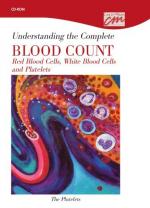|
This section contains 870 words (approx. 3 pages at 300 words per page) |

|
A platelet count is a diagnostic test that determines the number of platelets in the patient's blood. Platelets, which are also called thrombocytes, are small disk-shaped blood cells produced in the bone marrow and involved in the process of blood clotting. There are normally between 150,000-450,000 platelets in each microliter of blood. Low platelet counts or abnormally shaped platelets are associated with bleeding disorders. High platelet counts sometimes indicate disorders of the bone marrow.
The primary functions of a platelet count are to assist in the diagnosis of bleeding disorders and to monitor patients who are being treated for any disease involving bone marrow failure. Patients who have diseases such as leukemia, polycythemia vera, or aplastic anemia are given periodic platelet count tests to monitor their health.
Platelet counts use a freshly-collected blood specimen to which a chemical called EDTA has been added to prevent clotting...
|
This section contains 870 words (approx. 3 pages at 300 words per page) |

|


